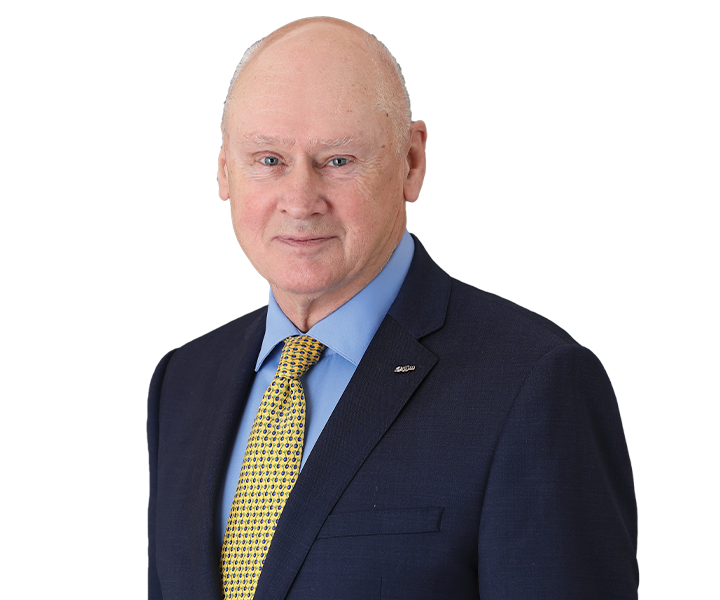Board
Letter
To Our Members & Stakeholders
The year 2020 was a particularly challenging year due to the COVID-19 pandemic. In many aspects, it was a full-scale stress test of our ability not only to keep the lights on, but also to function as an organization and to maintain continuity in markets, planning and the stakeholder process. We passed the test, affirming the strength of our bulk electric system and demonstrating the resilience, teamwork and ingenuity of PJM staff, member companies and stakeholders.
We started the year with our new president & CEO, Manu Asthana. He quickly demonstrated his leadership and communication skills, crucial in “normal times,” but even more so in a year of virtual meetings in place of in-person meetings. We thank him, the Executive Team and the staff for their dedication and resourcefulness. Special thanks and high appreciation to the control room operators and related functions, who twice during the year had to sequester on-site.
This past year also marks my last with PJM Interconnection, capping nearly two decades of service to the largest electric grid operator in the United States. It is with deep gratitude that I reflect on another year of strong system performance and the lowest locational marginal prices (LMPs) since the start of PJM as a regional transmission organization (RTO) in 1997.
Over the last decade, PJM’s robust transmission enabled the massive shift, over
Chair | PJM Board
President & CEO
PJM Interconnection
Chair | Human Resources Committee
Member | Board Governance Committee, Reliability & Security Committee
Chair | Risk & Audit Committee
Member | Competitive Markets Committee
Member | Competitive Markets Committee,
Risk & Audit Committee
Chair | Reliability & Security Committee
Member | Board Governance Committee, Human Resources Committee
Chair | Board Governance Committee
Member | Reliability & Security Committee
Chair | Regulatory Committee
Member | Reliability & Security Committee, Human Resources Committee
Member | Competitive Markets Committee,
Regulatory Committee, Finance Committee
Chair | Competitive Markets Committee
Member | Risk & Audit Committee, Finance Committee
The transition in the energy industry continues, now with more variable resources – wind and solar – entering the system. To balance the variability and meet the load with maintained high reliability, we will need a combination of adequate and flexible resources, transmission, storage and flexible load. We can build on the strong foundation we already have in all of these fields. Adopting new technologies and being open to innovations in market design will be important, but most important is to continue to work together with members and stakeholders.
In 2020, PJM took important steps in this respect, notably the planning partnership with New Jersey on a state agreement approach, which is a model already being considered by many states. It is through such partnerships as this that PJM acts as a conduit, providing a path for states to contract for the transmission facilities required to advance their specific energy goals and objectives. Changes happening at scale are the result of immense intergovernmental and private action, of which PJM plays a supporting, yet integral, part.
We also took the first steps for a discussion of the future construct for resource adequacy. Reliability at least cost has served the consumers in PJM’s territory well, but that alone will not be enough to also serve the many states within PJM in attaining their public policies for a greener and more sustainable energy future.
As I look back over my tenure on the PJM Board, I’m gratified to reflect on where we are today. I joined the Board in 2003 during the same year the large expansion from the core PJM started. In about five years, PJM doubled in size. The large footprint has resulted in huge benefits of scale. It also brought challenges for the planning of such a large system. We responded by developing the uniquely comprehensive and transparent Regional Transmission Expansion Plan (RTEP) process, which in turn resulted in new bulk transmission lines, like TrAIL and Roseland-Susquehanna, being built.
The year 2003 was also when a large blackout hit the Northeast U.S. The dominant part of the PJM system held up, but the event highlighted the fact that PJM is part of the Eastern Interconnection and that our system can be exposed to events outside of PJM. One of the most important developments to mitigate these reliability risks has been the deployment of phasor measurement units (PMUs), resulting in a much-increased visibility of the conditions of the PJM grid and the surrounding grids.
Perhaps nothing signifies the change the power industry has experienced over the past 15 years as much as the shale gas revolution and the rise of renewable technologies. Our robust transmission system enabled and our markets accelerated the change. The result is the most diverse fuel mix and the lowest electric energy prices since 1997, as well as much-reduced emissions.
More than ever, it is important to continue to support a culture of innovation founded on the ability to listen and learn from others.
PJM has been early, many times first, in adopting new technologies and developing new concepts like stated rates and “perfect dispatch.” Another great example is AC² with its open architecture and redundant operations of the two control centers. PJM was the first to have a large lithium-ion battery system to provide fast frequency response. Further, PJM participated in the pioneering work of the vehicle-to-grid (V2G) concept. This willingness to innovate did not happen by chance. More than ever, it is important to continue to support a culture of innovation founded on the ability to listen and learn from others.
Looking ahead, the PJM Board, with integrity and independence, continues to oversee the shifting industry landscape with solid leadership in place at PJM and a strategic plan advancing reliable and resilient operations, fair and efficient markets, infrastructure planning and our open, responsive and connected culture of employees, members and stakeholders.
Thank you for the opportunity to have served.
Ake Almgren, Ph.D., Chair, PJM Board of Managers
